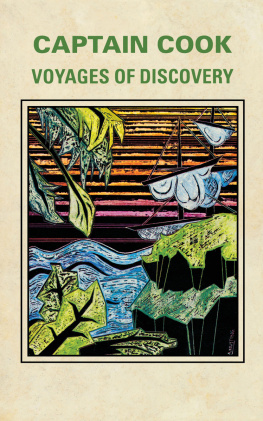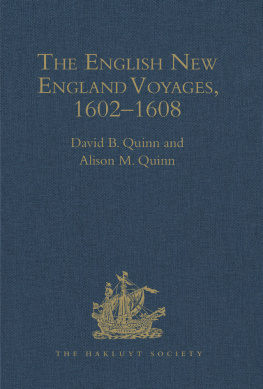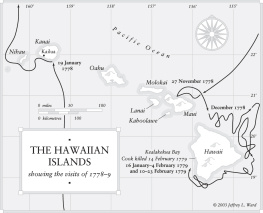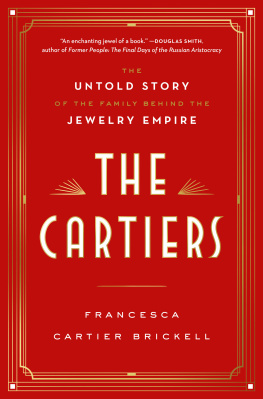THE VOYAGES OF JACQUES CARTIER
Jacques Cartiers voyages of 1534,1535, and 1541 constitute the first record of European impressions of the St Lawrence region of northeastern North America and its peoples. The Voyages are rich in details about almost every aspect of the regions environment and the people who inhabited it.
As Ramsay Cook points out in his introduction, Cartier was more than an explorer; he was also Canadas first ethnographer. His accounts provide a wealth of information about the native people of the region and their relations with each other. Indirectly, he also reveals much about himself and about sixteenth-century European attitudes and beliefs. These memoirs recount not only the French experience with the Iroquois, but also the Iroquois discovery of the French.
In addition to Cartiers Voyages, a slightly amended version of H.P. Biggars 1924 text, the volume includes a series of letters relating to Cartier and the Sieur de Roberval, who was in command of Cartier on the last voyage. Many of these letters appear here for the first time in English.
Ramsay Cooks introduction, Donnacona Discovers Europe, rereads the documents in the light of recent scholarship as well as from contemporary perspectives in order to understand better the viewpoints of Cartier and the native people with whom he came into contact.
RAMSAY COOK is professor of history at York University and general editor of the Dictionary of Canadian Biography. Among his numerous other books is The Regenerators: Social Criticism in Late Victorian English Canada, for which he was awarded the Governor Generals Award.

Though there are many portraits of Jacques Cartier, none is contemporary. This one is taken from M. de Clugnys Costumes franais depuis Clovis nos jours (Paris 1836).
University of Toronto Press 1993
Toronto Buffalo London
Printed in the U.S.A.
Paperback reprinted 1995, 2003, 2007, 2009, 2013
ISBN 0-8020.-5015-8 (cloth)
ISBN 0-8020-6000-5 (paper)

Printed on acid-free paper
The Voyages of Jacques Cartier and A Collection of Documents relating to Jacques Cartier and the Sieur de Roberval were first published as part of the Publications of the Public Archives of Canada in 1924 and in 1930, respectively.
Canadian Cataloguing in Publication Data
Main entry under title:
The Voyages of Jacques Cartier
ISBN 0-8020-5015-8 (bound)
ISBN 0-8020-6000-5 (pbk.)
1. America Discovery and exploration French.
2. New France Discovery and exploration.
3. Indians of North America Canada.
4. Indians of North America Languages.
I. Cook, Ramsay, 1931
FC301.C3C66 1993 971.0113 C92-095268-2
E133.C3C66 1993
All illustrations reproduced in this book were originally from H.P. Biggars Voyages of Jacques Cartier except for the photographs of the walled town of St Malo and Cartiers manor house at Limolou, which were taken by Ramsay Cook.
Publication of this edition has been assisted by the Canada Council and the Ontario Arts Council under their block grant programs.
Contents
Preface
Henry Percival Biggar was an accomplished historian of the earliest period of European exploration and trade in the St Lawrence region. He was born in Carrying Place, Ontario, on 9 August 1872 and educated at the University of Toronto (BA 1894) and at Oxford University (B.Litt. 1899, D.Litt. 1927). Queens University granted him an LLD in 1924. After Oxford, Biggar joined the staff of the recently established Public Archives of Canada, and in 1905 he was appointed chief archivist for Canada in Europe, a post he held until his death in 1938. His task was to search out and copy documents relating to the early history of Canada, a responsibility that required expert historical knowledge and a firm command of early modern French and English. Biggars major book, The Early Trading Companies of New France, appeared in 1901. Subsequently he edited the Works of Samuel D. Champlain in six volumes, published by the Champlain Society between 1922 and 1936, and two collections of documents: The Precursors of Jacques Cartier (Ottawa 1911) and A Collection of Documents relating to Jacques Cartier and the Sieur de Roberval (Ottawa 1930). The Voyages of Jacques Cartier (Ottawa 1924), with its carefully collated texts and informative footnotes, displayed Biggars talents as an editor and historian to the full.
It is Biggars translation, with some minor but interesting alterations and corrections, that is published in this new edition. The changes, apart from what appear to be typographical errors and careless proofreading, all relate to usage. Cartier never used the words Indian, squaw, chief, tribe, or wigwam. On those occasions where Biggar used them I have reverted to translations of Cartiers terms: sauvaige, homme, gens du pays, femme, peuple, seigneur, maison. These words better express Cartiers outlook and, in some cases, our own. Since it is Cartiers thought rather than Biggars that is important here, I believe these small alterations are justified.
Biggars French version of the Voyages has been dropped from this edition, and his notes have been reduced. That seemed a sensible decision since the French version has recently been made available in a splendid new critical edition edited by Michel Bideaux. Jacques Cartier Relations (Montral: Les Presses de lUniversit de Montral 1986) is, appropriately, the first volume in the Bibliothque du Nouveau Monde. The editor pays deserved homage to Biggar in making very few changes in the edition of 1924. There are also two recent editions in modern French, based on Biggars edition: Robert Lahaise and Marie Couturier, Jacques Cartier Voyages en Nouvelle-France (Montral: Hurtubise HMH 1977), and Ch. A. Julien, R. Herval, and Th. Beauchesne, Jacques Cartier Voyages au Canada (Paris: Franois Maspero 1981). The standard work on Cartiers geographical discoveries remains W.F. Ganong, Crucial Maps in the Early Cartography and Placenomenclature of the Atlantic Coast of Canada, with an introduction by T.E. Layng (Toronto: University of Toronto Press 1964).
Conrad Heidenreich, Olive Dickason, and Joe Brandao all made helpful suggestions about my introduction. John Flinn translated the documents I selected from Biggars Collection of Documents relating to Jacques Cartier and the Sieur de Roberval (except for numbers 8, 12, and 17, which were in English). I wish to thank them all, and also my editors, Gerry Hallowell, Laura Macleod, and Rosemary Shipton.
RAMSAY COOK
Donnacona Discovers Europe: Rereading Jacques Cartiers Voyages
During the year or so that I lived in that country, I took such care in observing all of them, great and small, that even now it seems to me that I have them before my eyes, and I will forever have the idea and image of them in my mind. But their gestures and expressions are so completely different from ours, that it is difficult, I confess, to represent them well by writing or by pictures. To have the pleasure of it, then, you will have to go see and visit them in their own country. Yes, you will say, but the plank is very long. That is true, and so if you do not have a sure foot and a steady eye, and are afraid of stumbling, do not venture down the path.
Next page










